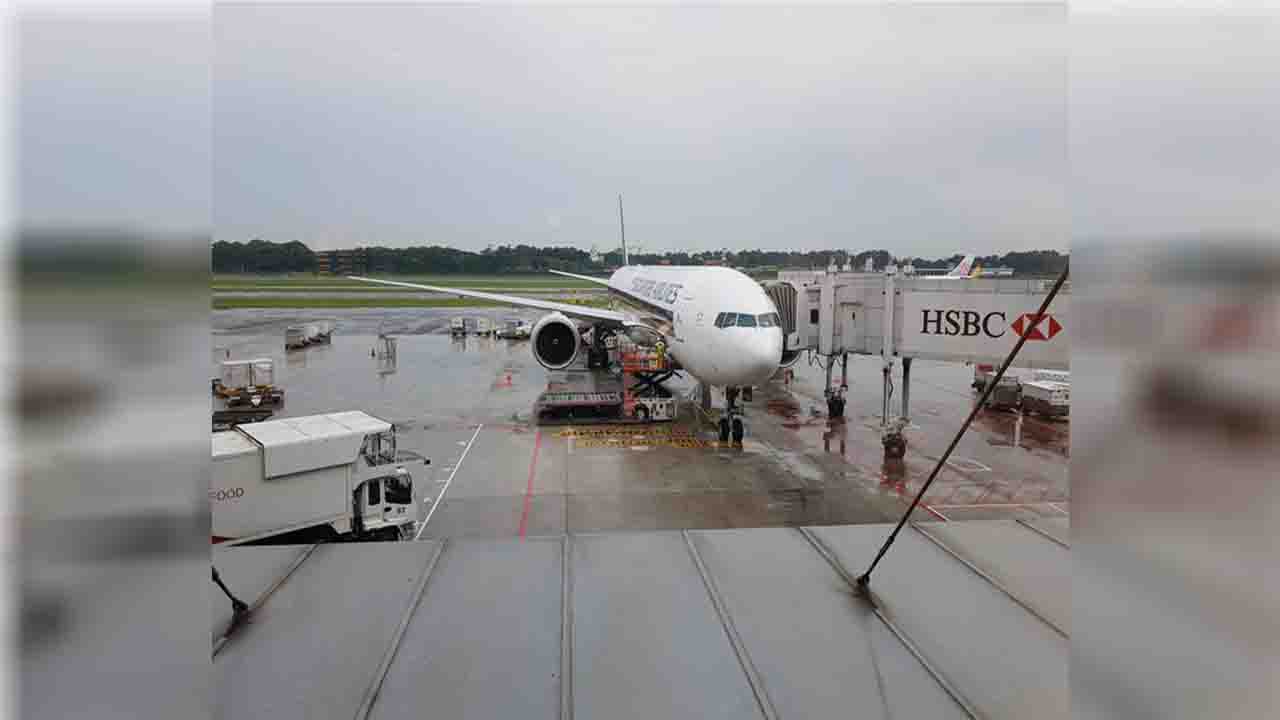A report was released into a Singapore Airlines Boeing 777-300ER that clearly came very close to running out of fuel and finally landed at Batam (South of Singapore in Indonesia) significantly below the required final reserve fuel.
The occurrence took place on 22nd October 2022 according to a final report by Singapore’s Transport Safety Investigation Bureau (TSIB), after the aircraft (9V-SWH) operated a service from London Heathrow.
A Singapore Airlines Boeing 777-300, registration 9V-SWH performing flight SQ-319 had departed from London Heathrow, EN (UK) to Singapore (Singapore) with 280 people on board, with 106,164 kg of fuel and was descending towards Singapore when the crew was told by Singapore Approach, to expect runway 20R for landing. The flight management computer indicated they would land with 7,000 kg of fuel remaining well above the final reserve fuel requirement of 3,084 kg. 4 minutes later approach instructed the crew to enter a hold due to tailwind for runway 20R.
At 16:05 local time the crew learned that a tailwind and heavy precipitation would delay arrivals, when they were preparing to land on Changi airport’s runway 20R.
The weather was poor at the two primary diversion airports, Singapore’s Paya Lebar Air Base and Senai International airport in Malaysia also, but conditions at Indonesia’s Batam airport appeared fine.
The Changi arrival runway was presently changed to 02L and since the 777 flew a holding pattern the weather continued to deteriorate.
The 777’s crew learned at 16:29, that the weather at Batam remained fine and also informed arrival control that they could perform only one hold at waypoint SAMKO, when they would be down to emergency fuel.
The crew asked for an update about Changi on completing the first hold over SAMKO at 16:36, and were informed that there was no change. They nonetheless informed arrival control that they could perform one more hold before diverting to Batam.
At the end of the second hold, at 16:42, the crew opted to conduct an orbit over SAMKO – at this point the diversion to Batam had yet to be cleared.
At 16:53 the crew declared “Mayday Fuel,”which was shortly followed by priority to land at Batam. By this time, however, weather conditions at Batam had deteriorated, with heavy rain and winds.
PREFERENCE FOR CHANGI
The TSIB questions the crew’s apparent preference to land at Changi in its analysis, noting an earlier diversion would have enabled a landing in better conditions at Batam.
The TSIB stated that with the decision taken to stay in hold as much as possible in hope that the scheduled arrival airport starts to accept arrivals again, the trade-off for any flight crew was the reduced safety margins available to them when the decision to divert is eventually made and should the need arise to perform more than one landing attempt owing to unforeseen events such encountering windshear during short finals that requires a go-around to be performed.
SIA, suggests however, that the crew lacked insufficient information to divert earlier.
What followed were a missed approach and two go-arounds at Batam with the first approach, to runway 22, being discontinued owing to a tailwind of 14kt (28km/h), gusting up to 30kt.
The second approach, to runway 04, resulted in a go-around when a “No Autoland” message was received by the crew, and released that the aircraft had been away from the centreline and glidepath for the runway. The go-around was executed at an altitude of 132ft.
The crew repositioned for another attempt at runway 04, and learned that visibility for runway 04 was down to 500m (1,640ft), while at runway 22 it was 6,000m. However, the pilot flying, informed controllers that there was insufficient fuel to reposition for runway 22 and stressed the next landing attempt on runway 04 “had to be successful.”
The TSIB said that according to the pilot flying, when the aircraft broke cloud cover on the second approach to runway 04, the aircraft was above the glidepath and offset to the left of the extended centreline of the runway.
GPWS WARNING
“The pilot flying increased the descent rate in an attempt to position the aircraft on the glidepath and extended centreline of the runway. The Ground Proximity Warning System However, generated a warning for excessive sink rate when the vertical speed exceeded 1,400ft per minute.”
The pilot initiated a go-around at an altitude of 212ft in response to the GPWS warning.
The crew then decided to land on runway 22 in spite of a 15kt tailwind.
The pilot flying was aware that the limit for aircraft’s tailwind certification was 15kt for landing and the operator’s procedure was not to land with a tailwind exceeding 10kt,” says the report.
The aircraft which landed at 17:19 taxied to a parking bay. the “fuel remaining was significantly below the [final reserve fuel] of 3,024kg. at touchdown. The investigation does not disclose the precise amount of fuel remaining.
SIA has conducted a review of the incident with all pilots, in the wake of the event.
The operator and air traffic services provider have initiated efforts to look at possibilities to expedite the coordination process with nearby alternate airport and consider setting up a team for real-time operations management during inclement weather added TSIB.
There were no injuries to those aboard and no damage caused to the aircraft. The 55-year-old captain had total flying time of 14,400h, while the 31-year-old first officer had 2,300h.








